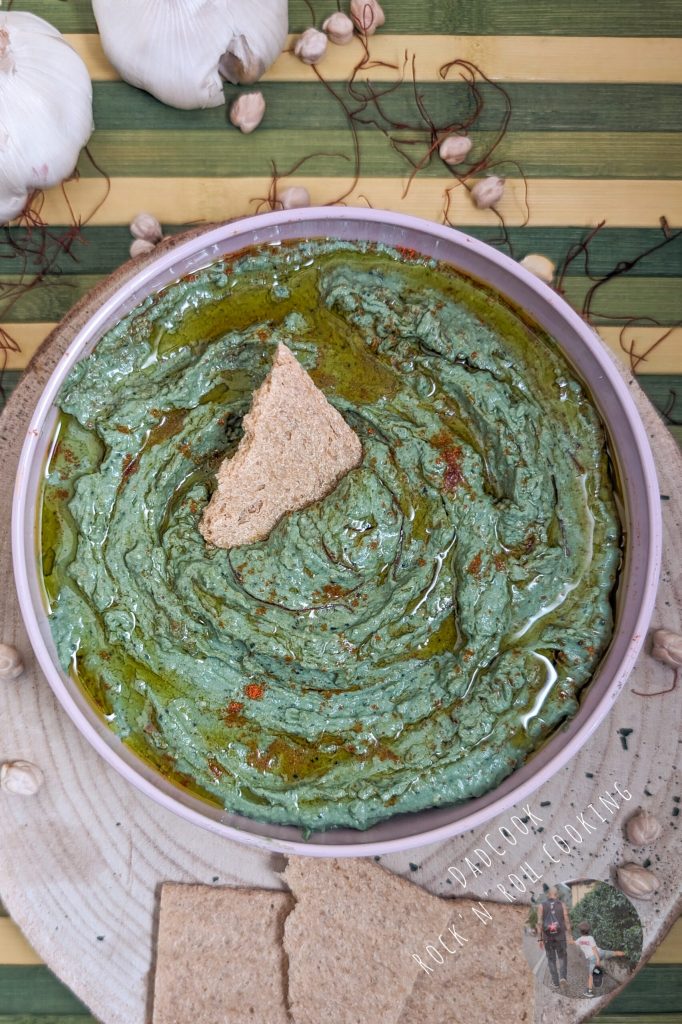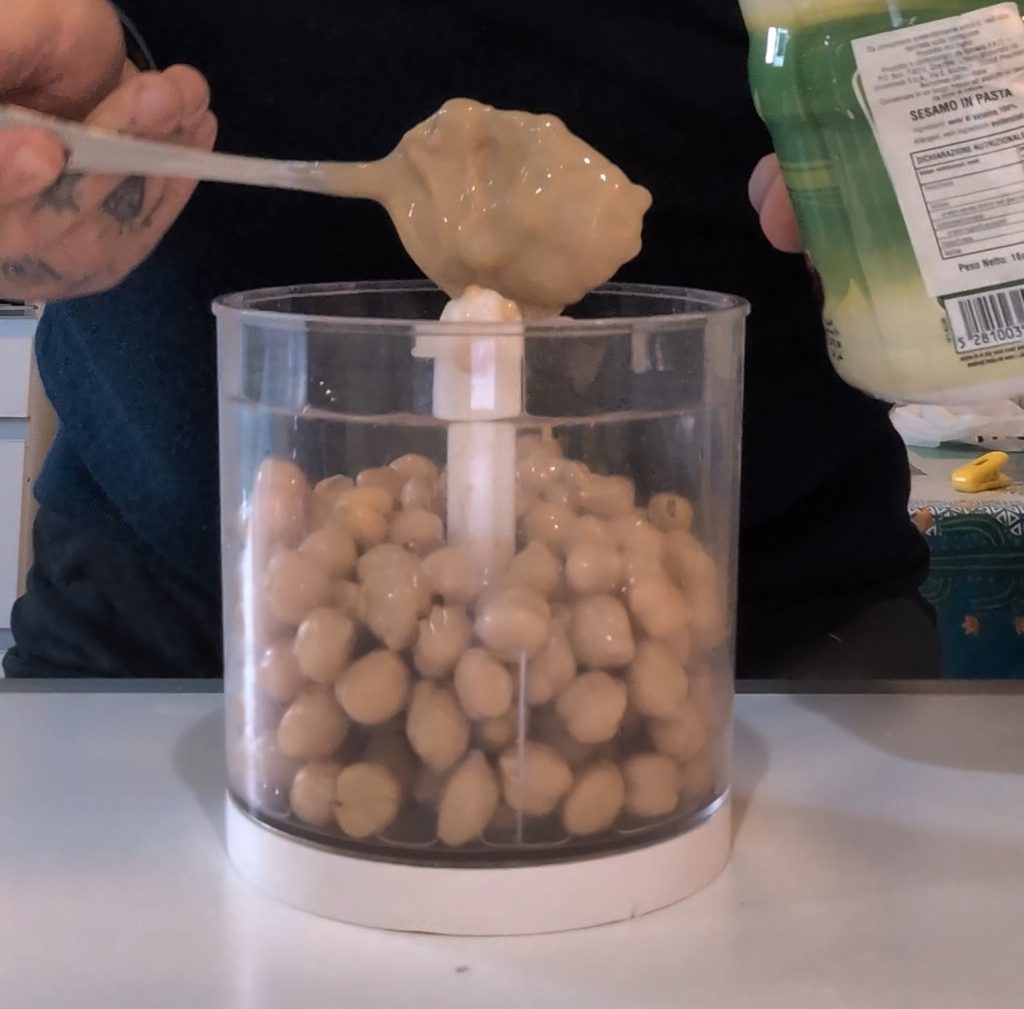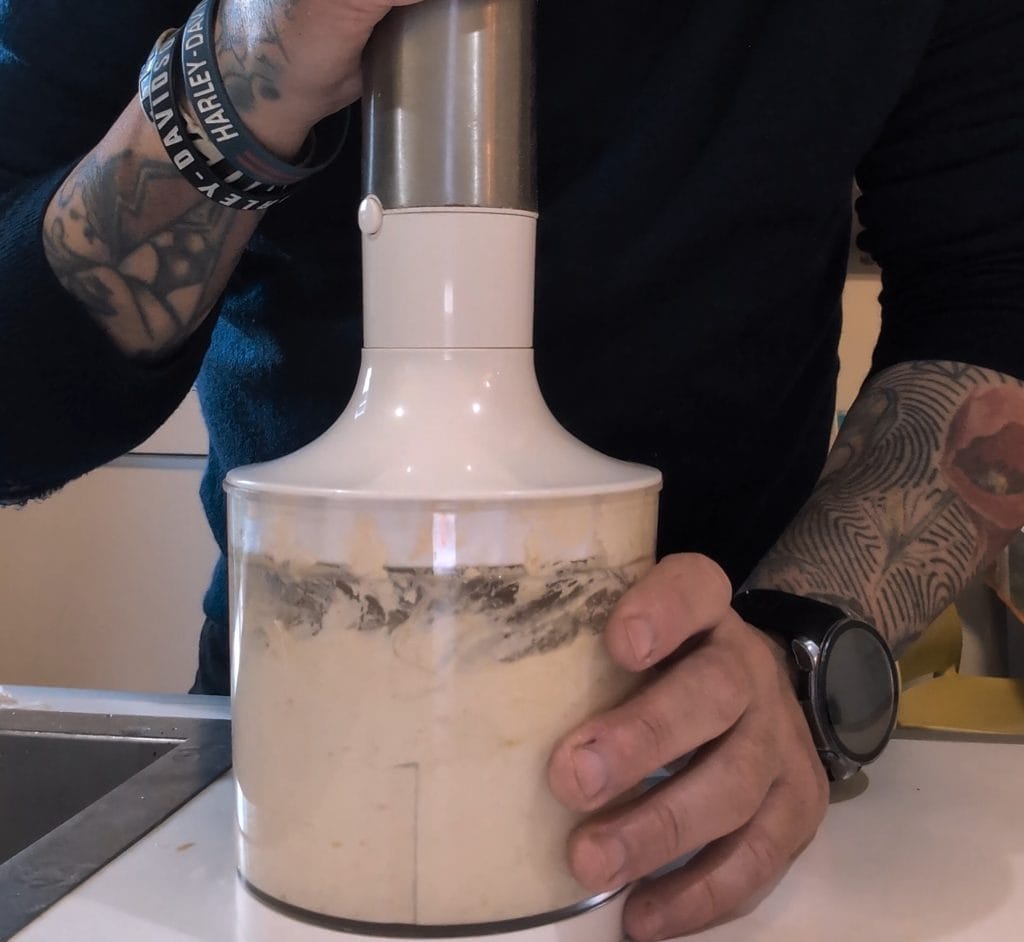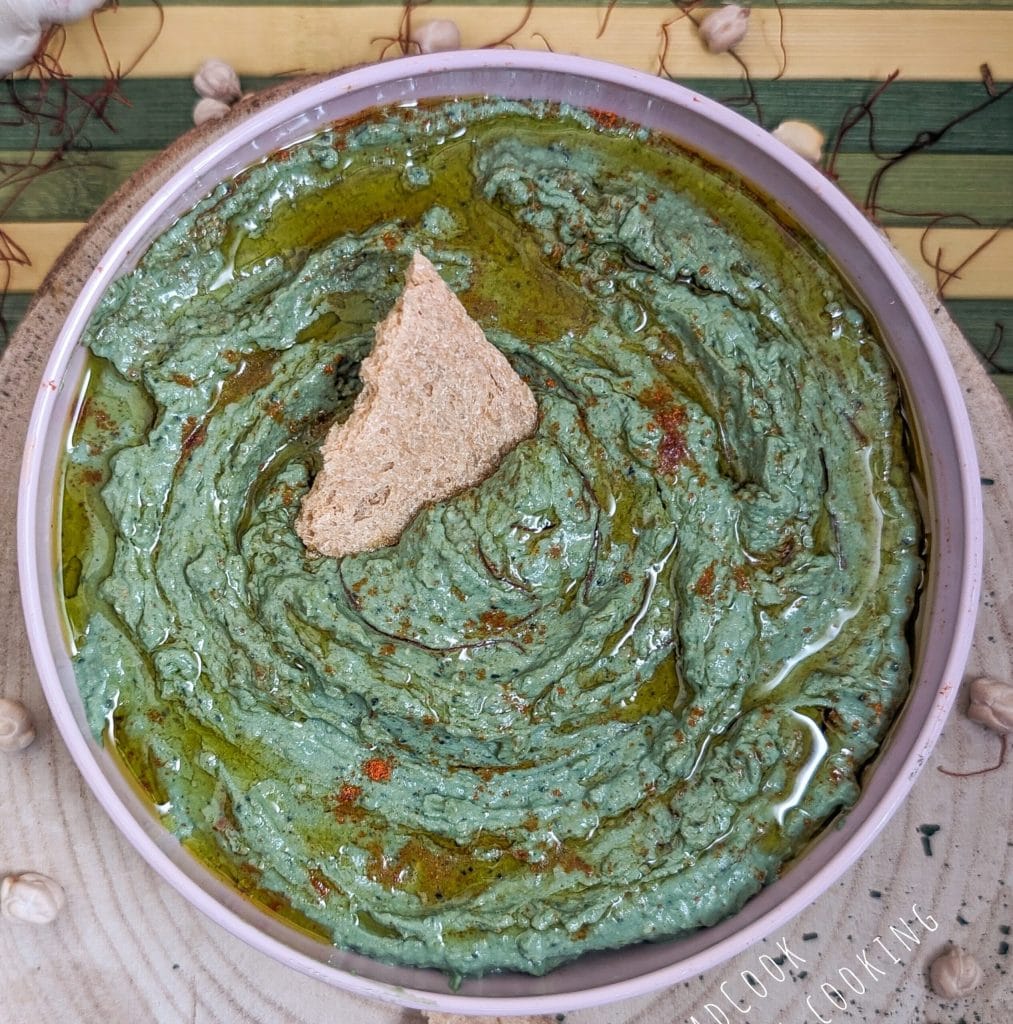Hummus with Spirulina: a green touch for your kitchen. The hummus with spirulina is a colorful and nutritious variant of the classic chickpea hummus.
The spirulina, an algae with incredible nutritional value, gives this sauce a bright green color and a slightly more intense flavor. Besides being a perfect appetizer to accompany raw vegetables, pita bread, or crackers, hummus with spirulina can be used in many different ways: As a salad dressing, adding a touch of freshness and protein. For sandwiches and wraps, replacing mayonnaise or other fatty dressings. For a summer cold pasta, creating an alternative pesto with basil, sun-dried tomatoes, and pine nuts. As an ingredient for: Vegetarian chickpea and vegetable patties, for a complete and flavorful second course. Chickpea falafel with hummus sauce, for an ethnic and fun appetizer. Savory pie with vegetables and ricotta, enriching the filling with the taste of hummus.
As a side to: Meat, fish, or vegetable main dishes, adding a touch of color and flavor. Fresh or aged cheeses, creating an interesting contrast of flavors. Rice or quinoa dishes, for a complete and nutritious meal.
Hummus with spirulina is a true culinary discovery, versatile and suitable for all palates.
Try it now and be surprised by its goodness! Some recipes you can try: Hummus with spirulina and sun-dried tomatoes. Hummus with spirulina and avocado. Hummus with spirulina and basil pesto. Hummus with spirulina and curry.
Experiment and have fun in the kitchen with this colorful and flavorful sauce!

- Difficulty: Very easy
- Cost: Very economical
- Rest time: 1 Hour
- Preparation time: 10 Minutes
- Portions: 4
- Cooking methods: No cooking
- Cuisine: International
- Seasonality: Spring, Summer, All seasons
- Energy 183.97 (Kcal)
- Carbohydrates 20.25 (g) of which sugars 1.34 (g)
- Proteins 8.05 (g)
- Fat 7.48 (g) of which saturated 0.72 (g)of which unsaturated 2.63 (g)
- Fibers 6.36 (g)
- Sodium 205.95 (mg)
Indicative values for a portion of 161 g processed in an automated way starting from the nutritional information available on the CREA* and FoodData Central** databases. It is not food and / or nutritional advice.
* CREATES Food and Nutrition Research Center: https://www.crea.gov.it/alimenti-e-nutrizione https://www.alimentinutrizione.it ** U.S. Department of Agriculture, Agricultural Research Service. FoodData Central, 2019. https://fdc.nal.usda.gov
Ingredients
- 14 oz cooked, boiled chickpeas
- 3 tablespoons tahini
- 1 clove garlic
- 4 teaspoons extra virgin olive oil
- 4 tablespoons water
- 2 tablespoons lemon juice
- 1 pinch salt
- 2 tablespoons Spirulina (In powder)
Tools
- 1 Immersion Blender
Steps
To prepare delicious hummus with spirulina in no time, use pre-cooked chickpeas:
Cook them the day before or use canned ones, rinsing them well under cold water.
For a more intense flavor, toast the chickpeas in the oven before blending them.

Let’s add the tahini, an essential ingredient for hummus!
Tahini not only binds the chickpeas with the rest of the ingredients, but it is also a sesame seed paste with a rich flavor that gives the hummus a creamy and velvety texture.
The taste and an unmistakable flavor, enriched by the toasted sesame flavor. It is rich in proteins, fibers, vitamins, and minerals, making the hummus even more nutritious.

Now it’s time to add the final ingredients to bring our hummus to life:
Extra virgin olive oil for a touch of creaminess, fresh lemon juice for a touch of acidity and freshness, garlic adds a pungent flavor (optional), and finally, salt to enhance the flavors.
Taste the hummus after blending it. If you don’t like the raw garlic flavor, you can omit it or substitute it with garlic powder. For creamier hummus: add a bit of water as you blend.

To achieve creamy and velvety hummus, blend intermittently to avoid overheating the blender blade. While blending, add a bit of water to achieve the desired consistency. Water helps make the hummus creamier and smoother.
Taste the hummus after blending and adjust the ingredients to your taste.

After achieving the hummus: Add the spirulina powder and blend again to combine, adjusting the consistency with water if necessary.
Start with a teaspoon of spirulina and add more to your taste because spirulina has a seaweed-like flavor, and if you don’t like it, start with a little.
Spirulina is rich in nutrients: a healthy touch to your hummus!

Before storing it in the fridge for an hour: Drizzle the hummus with extra virgin olive oil and sprinkle it with a pinch of paprika for a touch of color.
When serving it: You can enjoy it with pita bread, raw vegetables, breadsticks, or use it as a dressing for sandwiches or salads.
Enjoy your meal!

Some information on how to store hummus with spirulina:
Refrigeration: Hummus can be stored in the fridge for 3-4 days. Make sure to store it in an airtight container to prevent it from drying out or absorbing odors from the fridge. Freezing: Hummus can be stored in the freezer for up to 2 months. If you freeze it, it is advisable to thaw it in the refrigerator overnight before serving. The consistency of the hummus might change slightly after freezing, but the flavor will remain the same. Storage tips: To prolong the shelf life of hummus, you can add a tablespoon of lemon juice or apple cider vinegar. You can also add a bit of extra virgin olive oil to the surface of the hummus before storing it in the fridge.
If the hummus shows mold or an unpleasant odor, it is better not to consume it. I hope this information is useful to you!
If the hummus shows mold or an unpleasant odor, it is better not to consume it. I hope this information is useful to you!
Wine to pair with Hummus with Spirulina:
Pairing the right wine with hummus with spirulina requires a slightly different approach than classic hummus. Spirulina adds an earthy element and a hint of seaweed flavor that we must consider.
Here are some wine pairing suggestions for hummus with spirulina:
Aromatic white wines: Rhine Riesling: Young and sparkling Rieslings from Germany or Alsace in France have good acidity that balances the creaminess of the hummus and the earthy notes of spirulina.
Sauvignon Blanc: A Sauvignon Blanc from New Zealand with its characteristic herbaceous note can help balance the seaweed flavor of spirulina.
Rosé wines:
Rosé from Salento: An Italian rosé from Salento, often made with Negroamaro or Primitivo grapes, has a good structure and a pleasant freshness that pairs well with the flavors of hummus with spirulina.
Pinot Noir rosé: A Pinot Noir rosé from Burgundy in France is another interesting option. It has a slightly fuller body than other rosés and red fruit aromas that can help contrast the earthy notes.
Final considerations:
Avoid overly heavy or spicy white wines that could overpower the flavors of the hummus. If the hummus with spirulina is particularly flavorful, you might also consider a light and fruity red wine, such as a young Pinot Noir or a Gamay from Beaujolais.
In the end, the choice of wine always depends on your personal tastes.
Experiment and enjoy. Bon appétit!
FAQ (Questions and Answers)
Can I use this recipe to make hummus without spirulina?
Of course you can! The recipe I shared is a basic hummus recipe, and spirulina is just an optional ingredient. If you don’t want to use it, you can simply omit it from the recipe.
You can also add a pinch of paprika or cumin for an extra touch of flavor.

